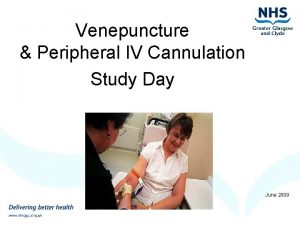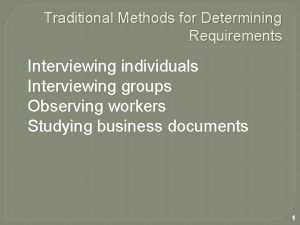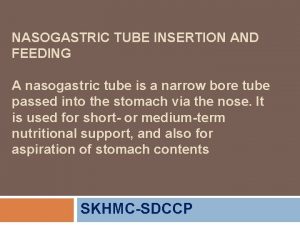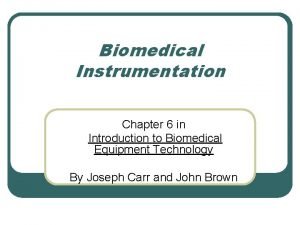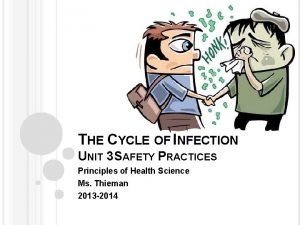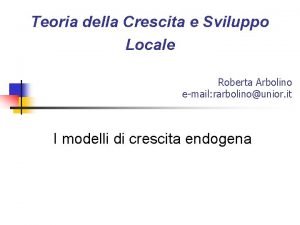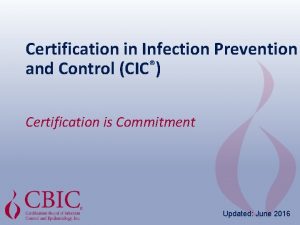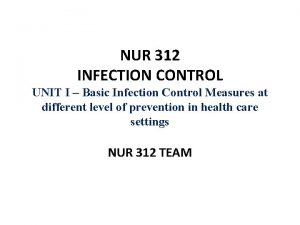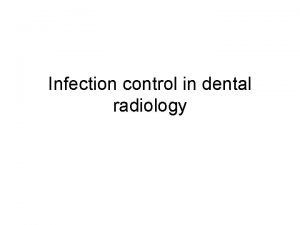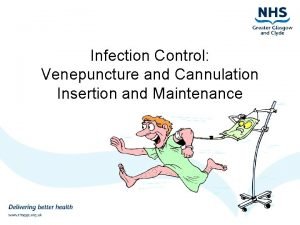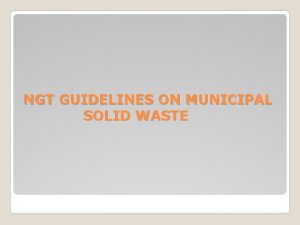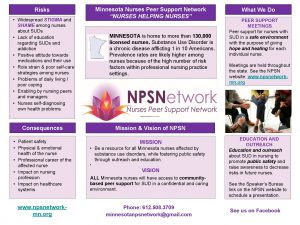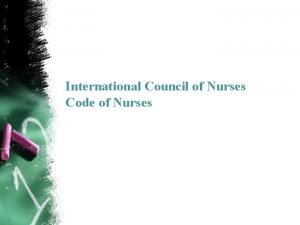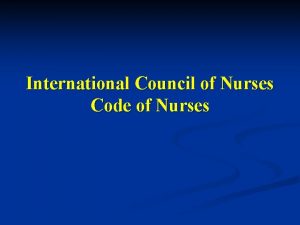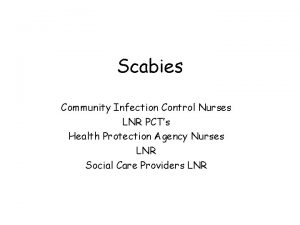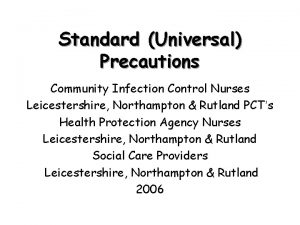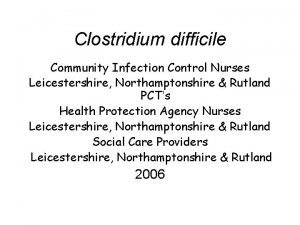Infection Control Cannulation Venepuncture Infection Control Nurses NGT

























- Slides: 25

Infection Control Cannulation & Venepuncture Infection Control Nurses NGT

Aims and Objectives • Discuss types of infection associated with venepuncture and cannulation. • List the measures taken to prevent infection. • Describe the safe handling of sharps. • List the first aid measures to be taken in a needlestick injury. • Describe the safe handling and transportation of specimens.

Types of infections associated with IV Devices • • • Local site infection. Phlebitis. Bacteraemia. Septicaemia. Metastatic infection.

Factors influencing the risk of infection • Duration of cannulation. • Type of cannula (e. g. peripheral, central, Hickman). • Insertion site. • Cannula material.

Staphylococcus epidermidis

Gram Negative Organisms

Staphylococcus aureus


Sources of Infection • • • All healthcare workers. The patient. The venflon or vacutainer. The disinfectant. The environment.

You are introducing a foreign object into a sterile area. Every IV device is an infection opportunity.


Other risks • Needlestick injury to the operator. • Cross infection of patients. • Needlestick injury to others.

How you can be exposed. • needlestick injury. • accidental splash contamination of broken skin and mucus membranes. Prevention strategies. • NO recapping of needles. • use of personal protective equipment e. g. gloves, aprons, goggles or face visors.

Risk of BBV acquisition HBV - non-immunised up to 30%. “HCWs who have received HBV vaccine are at virtually no risk of infection”. HCV - 2 -3% HIV - 0. 3% or 1: 300

Cross-infection disasters There have been reported outbreaks of HBV caused by nurses not changing their gloves. A healthcare worker ran out of butterflies, so she washed and reused them.

Preparation • • Have all your equipment in one place. Have some paper towels in case of spills. Have a sharps box. If necessary get some help.

What do you need? • • Training. Hand hygiene. Gloves. Sterile equipment within its expiry date and all packaging intact. • Skin cleansing. • Dressings.

Do you need help? • One of the leading causes of NSI is the patient moving unexpectedly. • More likely to get a NSI if inexperienced. • Don’t like the situation, don’t do it on your own.

NSI • • Bleed. Wash (don’t scrub). Cover. Report it, to the nurse in charge, then Occupational Health or A&E within 1 hour. • Treat. • Fill out an IR 1.

• This is the Needlestick Injury Flip chart for GGHB

After insertion • • • Dressing. Dispose of waste. Remove gloves. Hand hygiene. Document & care plan.

Labelling of specimens Biohazard labels should be applied to specimens known or suspected to contain blood borne viruses or tuberculosis.

Safe handling and transportation of specimens • Ensure container is leak-proof and can be sealed securely. • Remove all traces of blood from the outside of the container. • Place biohazard label on the container and form if appropriate. • Ensure the container is sealed in a specimen bag. • Ensure a fully completed form is placed in the separate pocket.

• This is not the way to send specimens or dispose of your sharps!!!

Remember! HAND HYGIENE. The most important measure in preventing infection.
 Iv cannulation procedure ppt
Iv cannulation procedure ppt Transfixation in cannulation
Transfixation in cannulation Sor cannulation course
Sor cannulation course Traditional methods for determining system requirements
Traditional methods for determining system requirements Unknown home employee ngt 06-2 (1)
Unknown home employee ngt 06-2 (1) Nasogastric tube
Nasogastric tube Ngt 5ch
Ngt 5ch Nursing diagnosis of retinal detachment
Nursing diagnosis of retinal detachment Transducers used in biomedical instrumentation
Transducers used in biomedical instrumentation Chain of infection
Chain of infection Ngt.edu.hcm
Ngt.edu.hcm Roberta arbolino
Roberta arbolino Codan ngt
Codan ngt Ngt visual studio
Ngt visual studio Codan ngt
Codan ngt Tankstellennetz
Tankstellennetz How can ngt be used for requirements determination
How can ngt be used for requirements determination Dental radiographic interpretation ppt
Dental radiographic interpretation ppt What are universal precautions in cosmetology
What are universal precautions in cosmetology Chapter 16 infection control and standard precautions
Chapter 16 infection control and standard precautions Chapter 16 infection control and standard precautions
Chapter 16 infection control and standard precautions Chapter 15:4 observing standard precautions
Chapter 15:4 observing standard precautions Chapter 15:5 sterilizing with an autoclave
Chapter 15:5 sterilizing with an autoclave Cic exam certification
Cic exam certification Infection control meaning
Infection control meaning Infection control in dental radiology
Infection control in dental radiology

